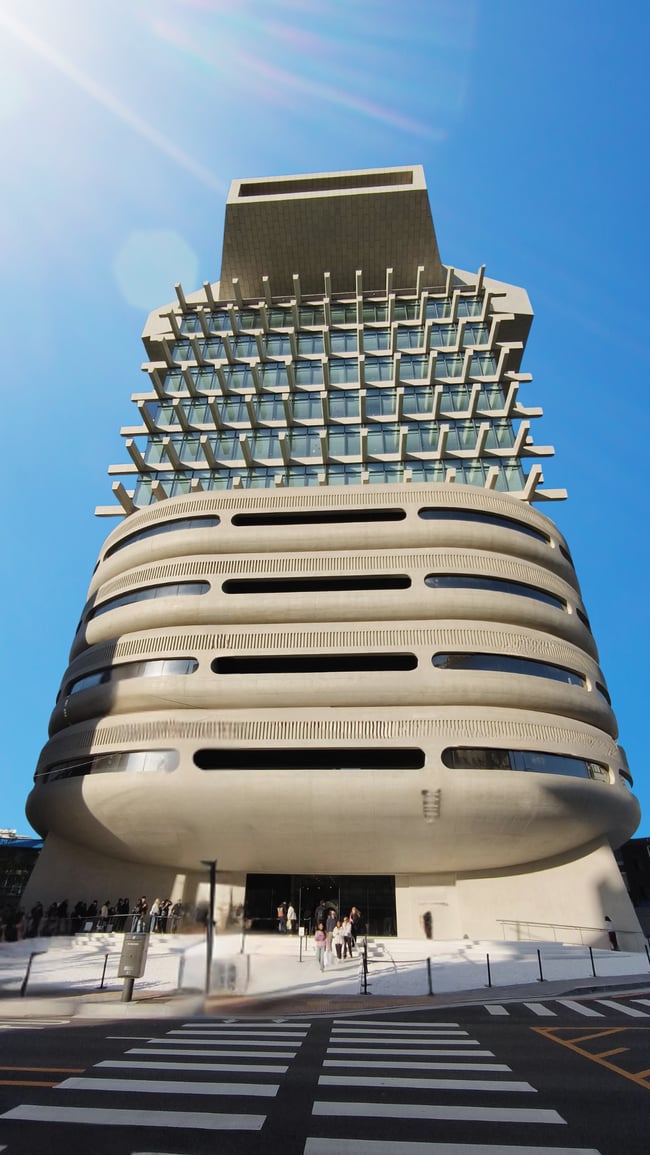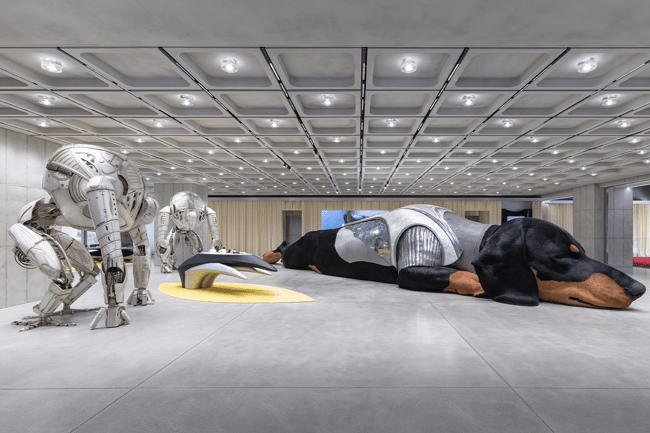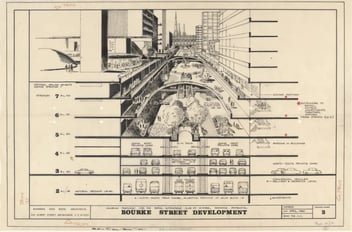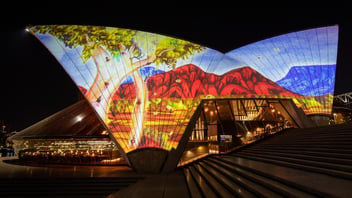The Build Edit | Haus Nowhere Seoul
Haus Nowhere is one of those rare projects that instantly changes the conversation around what retail architecture can be. Opened in September 2025, and located in Seoul’s Seongsu-dong district, the building positions itself not as a store, but as an experience: a multi-level, sensory-driven encounter created by IICOMBINED, the group behind Gentle Monster and Tamburins.
It is a project that demonstrates the growing influence of brand-driven architecture, where the physical environment becomes an extension of storytelling, identity and culture.
At the centre of the building’s impact is architect Chanjoong Kim of THE_SYSTEM_LAB, whose brief went beyond designing a functional retail space. The goal was to build a destination. The result is a striking brutalism-meets-sci-fi exterior that feels powerful and otherworldly in equal measure. Raw concrete walls ground the structure in weight and material honesty, while the curved, tinted windows soften the edges and introduce a futuristic, almost cinematic quality. It is this tension, the meeting of mass and motion, that gives Haus Nowhere its unmistakable presence from the street.
Scale plays a major role too. The building rises with a commanding verticality, immediately signalling a sense of ambition and creative intent. Instead of blending into Seongsu-dong’s industrial landscape, it deliberately stands apart, asserting itself as a new architectural anchor for the neighbourhood. The design is confident without being loud, experimental without feeling alien, and ultimately reflects a brand unafraid of pushing boundaries.

Once inside, the architecture shifts from bold form to immersive narrative. Each floor has its own spatial personality, achieved through material changes, lighting strategies and sculptural installations. Visitors don’t simply move through the building, they transition through atmospheres. This creates a slow-build sense of discovery that turns product engagement into a series of moments rather than a checklist of retail zones.

Photo: Hypebeast
Light is one of the strongest storytelling devices in the project. Soft gradients, reflected highlights and controlled shadows are used as wayfinding cues and emotional triggers. It creates intimacy in some spaces and theatre in others, shaping the customer journey with precision. Materiality follows the same logic: raw concrete gives way to polished surfaces, sculpted forms and tactile finishes, each reinforcing the rhythm of the narrative.

Photo: Haus Nowhere Seoul/Hypebeast
What makes Haus Nowhere particularly compelling is the way it merges architecture and brand strategy. The building isn’t designed around product placement, it is designed around how people feel as they encounter the brand. That shift from functional retail to emotional experience is exactly what global design media has been responding to. It represents a retail model where architecture becomes a strategic asset, amplifying perception, elevating identity and turning a visit into a memory.
Photo: Haus Nowhere Seoul/Art Installation/Hypebeast
For designers and manufacturers, Haus Nowhere Seoul is a strong signal of where experiential retail is heading. It shows the value of courageous material decisions, the power of narrative sequencing and the increasing expectation that built environments offer something deeper than aesthetics. It is a project that blends creativity, clarity and cultural relevance, and one that will continue to influence discussions around future-forward retail architecture. Photo: Haus Nowhere Seoul/Hypebeast
Photo: Haus Nowhere Seoul/Hypebeast
Haus Nowhere is a strong reminder of how thoughtful design can shift behaviour, deepen engagement and elevate brand presence. At The Arc Agency, we connect suppliers, designers and ideas that support this kind of future-focused thinking. If you’re exploring new materials or planning your next project presentation, talk to us about how we can help you reach the specifiers shaping tomorrow’s built environment.
Client: IICOMBINED (Gentle Monster, Tamburins, Nudake, Atiissu, Nuflaat)
Architect: Chanjoong Kim, THE_SYSTEM LAB
Design Direction / Experience Design: IICOMBINED Creative Team



.png)


